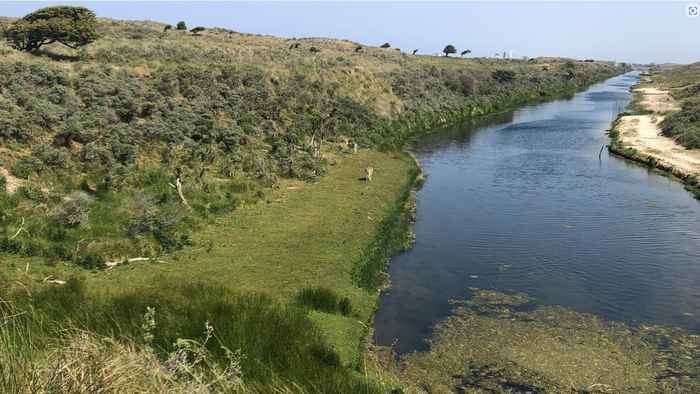Revolutionizing biodiversity monitoring with a network of automated wildlife cameras
20 November 2024
The Amsterdam Water Supply Dunes (AWD) is a nature reserve at the Dutch coast between Amsterdam and the North Sea that serves multiple purposes: purifying drinking water, providing a natural recreation spot for visitors and protecting the dunes which are home to fallow deer, foxes and rabbits, among other species.
Monitoring the vegetation and animals at the AWD allows the site managers to maintain a healthy ecosystem and implement targeted conservation strategies. For many years, the site managers have monitored wildlife, especially rabbits and fallow deer, using labor-intensive field surveys in spring and autumn, which require long hours of fieldwork and manual data collection.
Enter automated camera networks
Alongside the current monitoring approaches, this project has set up an innovative network of solar-powered wildlife cameras that continuously collects images and wirelessly transmits them to a database. From 2021-2023, the team tested different camera traps in the field and developed a web portal to be able to remotely view images and monitor camera performance, such as battery levels and potential malfunctioning.

The web portal can send images to artificial intelligence (AI) platforms that can identify species in the captured images. The tested AI model was able to detect rabbits, foxes and fallow deer reasonably well, and reduced the time needed for manual image analysis.
While the initial costs of setting up this automated monitoring system are higher compared to a traditional camera trapping system without automation, the long-term benefits are substantial. The system is projected to be 43% cheaper than traditional systems over a 10-year period. This is largely due to reduced labor and maintenance costs, as fewer field visits are needed to maintain the cameras or retrieve data.
Ecological insights
The sampling design placed 65 cameras in a grid pattern across all habitats in the study area and along traditional monitoring routes. Cameras were also placed inside and outside exclosures built to study how the ecosystem recovers after fallow deer are prevented from heavily grazing on the dune vegetation. The researchers are now using the camera trapping system to study the recovery of the rabbit population which has collapsed in the Dutch coastal dunes in recent years. Other mammals such as the red fox, European hare and roe deer are currently not well monitored with field surveys so the network will provide new insights into their habitat use, activity and distribution.

With its ability to capture and transmit images continuously, this new system was able to record vast amounts of data efficiently. The cameras detected the rabbits and fallow deer that are currently being monitored, but also 18 other species, including foxes, different bird species and rare sightings of polecats, helping scientists paint a more detailed picture of the wildlife community. This method could be adapted for other nature reserves, especially in open habitats where mobile networks are available, making it a scalable and cost-efficient approach to monitoring wildlife.
About the project
This project was led by Assoc. Prof. Dr. W. Daniel Kissling of IBED and is part of the NIEBA-ARISE project (NWO Roadmap grant number 2020/ENW/00901156), which is financed by the Dutch Research Council (NWO).